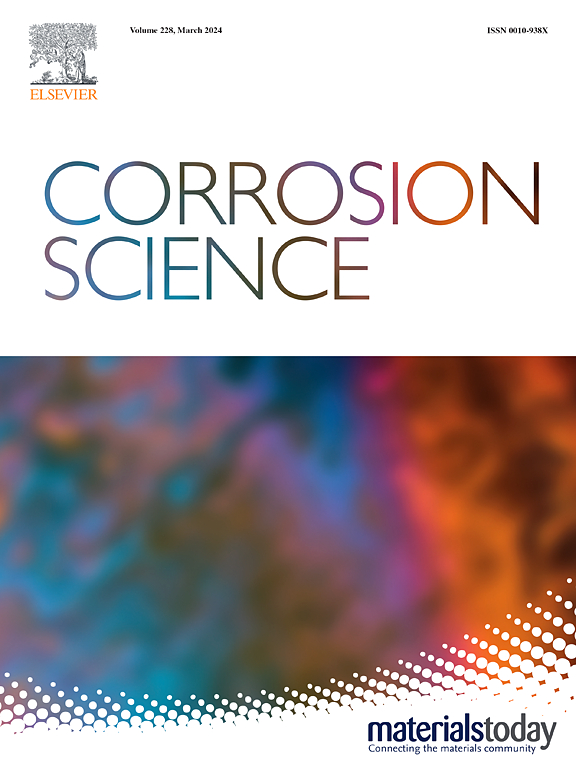掺铬氮化铀燃料球团的加速和非均相腐蚀
IF 7.4
1区 材料科学
Q1 MATERIALS SCIENCE, MULTIDISCIPLINARY
引用次数: 0
摘要
在连续等温保持高达720°C期间,分析了cr掺杂UN燃料颗粒的蒸汽氧化。原位中子衍射结果显示Cr是如何被安置在次级U2CrN3相中,导致形成UN/U2CrN3双相微观结构。在腐蚀条件下,UN和U2CrN3分别在400℃和430℃时开始氧化。由于UN相在U2CrN3的存在下优先氧化,因此在UN基核燃料中添加Cr可以加速腐蚀速率。在430°C时,UN/U2CrN3微观结构中UN的氧化速度比纯UN快约5倍,在460°C时增加到约19倍。U2CrN3的氧化通过形成两个瞬态中间相产生UO2。原位中子衍射使UN和U2CrN3组分的氧化过程在两相体系中分别进行。本文章由计算机程序翻译,如有差异,请以英文原文为准。
Accelerated and heterogeneous corrosion of Cr-doped uranium nitride fuel pellets
The steam oxidation of Cr-doped UN fuel pellets is analysed during sequential isothermal holds up to 720 °C. In situ neutron diffraction results show how Cr is accommodated in a secondary U2CrN3 phase, leading to the formation of a duplex UN/U2CrN3 microstructure. Under corrosion, the oxidation of the two phases begins at 400 °C for UN and 430 °C for U2CrN3, respectively. Because the UN phase is preferentially oxidised in the presence of U2CrN3, addition of Cr in UN based nuclear fuel is found to accelerate the corrosion rate. At 430 °C the oxidation of UN in the UN/U2CrN3 microstructure is ∼5 times faster than pure UN, increasing to ∼19 times faster at 460 °C. The oxidation of U2CrN3 produces UO2 via the formation of two transient intermediate phases. In situ neutron diffraction enables oxidation processes of UN and U2CrN3 components to be followed separately within the two-phase system.
求助全文
通过发布文献求助,成功后即可免费获取论文全文。
去求助
来源期刊

Corrosion Science
工程技术-材料科学:综合
CiteScore
13.60
自引率
18.10%
发文量
763
审稿时长
46 days
期刊介绍:
Corrosion occurrence and its practical control encompass a vast array of scientific knowledge. Corrosion Science endeavors to serve as the conduit for the exchange of ideas, developments, and research across all facets of this field, encompassing both metallic and non-metallic corrosion. The scope of this international journal is broad and inclusive. Published papers span from highly theoretical inquiries to essentially practical applications, covering diverse areas such as high-temperature oxidation, passivity, anodic oxidation, biochemical corrosion, stress corrosion cracking, and corrosion control mechanisms and methodologies.
This journal publishes original papers and critical reviews across the spectrum of pure and applied corrosion, material degradation, and surface science and engineering. It serves as a crucial link connecting metallurgists, materials scientists, and researchers investigating corrosion and degradation phenomena. Join us in advancing knowledge and understanding in the vital field of corrosion science.
 求助内容:
求助内容: 应助结果提醒方式:
应助结果提醒方式:


